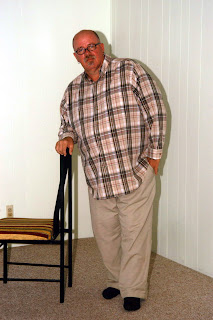In photography you may have heard of the rule of thirds. Most people think that it only has to do with the composition of a picture. You know dividing a picture into three parts for a more balanced and astatically pleasing photo. However the rule of thirds pertains to so much more in photography. For professional photographers it also applies to how they determine what to charge; one third going to the photographer, one third for expenses of any given shoot, and the last third to run and maintain the studio. Back in the day when we had to deal with darkrooms there were three chemical baths used to develop a photograph. Then there is my favorite, three things you should do to managing your photos.
This managing of your photos applies to anyone taking pictures. It makes no difference if they are a professional photographer charging money for your services, or just you average fancy cell phone user; everybody taking pictures has to manage what they do with the pictures they take. If you don’t you could end up like the guy back in 1941 that did not do his job and the entire world lost out because of it. To find out more about this guy, how badly he messed up, and why it was the entire world that missed out, you are going to have to come back next Monday Dec. 6 to read and see what happens when you do not manage you photos like you should. Mark your calendars right now.
For now I am going to go over the basics of How to Manage Your Photos but first let’s go over the rule of thirds that we will be dealing with today. First you take the picture; next you develop the picture; last what to do with your pictures. “Wait a minute” you say. “I shoot digital not film so I don’t have to develop my pictures any more.” WRONG.
Assuming you are not a perfect photographer like me, ha ha. You just might have to adjust the pictures you have taken. Lighten or darken, color correct, crop or even add and removing objects from the background and foreground is still something you have to do even if you are shooting digital. Then there is the filing and storing of your photographs. To accomplish this you should number each picture and store those pictures under a file name that makes sense when you want to find those pictures again. Now days it also helps to name each shot or individual picture too. Something like File name; Toys for Tots Bike Run 2010, photo # 116, name of photo; Bikes Arriving at Post; will let you find that group of photos and the exact picture you want when and if you ever want to use that photo again. Also keep in mind that most programs and/or picture storage sites now offer a database that will let you find pictures easily using keywords if the photographs were imputed correctly. So if at some future date you want to see that photo of the 2010 Toys for Tots Bike Run and wonder how many bikes showed up you can type in Toys for Tots 2010 Bikes Arriving and shot # 116 will be there.
This also brings me to my point of this article. If you are doing what I told you to do and taking lots of pictures you might have well over 100 photos to go through each time you drag out your camera. That is a lot of pictures to go fix, name, and file. What I suggest is just what I did back in my darkroom days. I just got rid of the pictures that didn’t tell or show what I was trying to photograph. Then I just got rid of all the pictures that I screwed up when I took them. As an example if you are photographing a dog and he runs out of the frame just as you snap your photo, just get rid of it. If someone bumps you and the picture you are trying to take is crooked or out of whack, just get rid of it. You pointed the camera at the sun and the picture is blown out, get rid of it. Even if you did what I told you to do and took several shot of the same subject, pick one and just get rid of those extra shots.
Can’t bring your self to delete all those unwanted and bad shots? I don’t blame you. I never could either. What I use to do was in each job file in my filing cabinet was an extra folder marked Not Used. When I switched to digital I simply did the same thing. Each event or subject has a file name. Under that file name is an extra folder marked Not Used. Even if I was going to use an on-line picture storage site like Flicker.com I would only store the good or useable shots there. The Not Used folder that contains all those bad shots I would store on my computer so only I would know how often I messed up. Bad photos should be kept a secret anyway. Like Mr. Scott said, “How else are they going to think you are a miracle worker.” Or in this case what a great photographer you are. ONLY SHOW THE SHOTS THAT WORK and lock away the ones that didn’t or just get rid of them. That is if you want to be as good of a photographer as I am. Now you know.
As for the last third or what to do with your pictures, well we did hit upon that a few weeks ago. Professional photographers sell or display their work. This may sound like a no-brainer but selling and displaying photo opens up a whole other can of worms for us pros. For all you average, I like to take pictures, type of folks you too should think about what you are going to do with all of your pictures. Put them in that shoe box, album, or store them in your computer? Maybe you want to send them to a friend or family member. Bottom line is now that you took the pictures and you fixed them, marked them, and stored them, you should now find a way to use them so that everybody can enjoy them. As a matter of fact, this article and your photos might have a lot in common. In this case what ever you do with this article? Do not just get rid of it. Read it, Store it, and Do it.




























